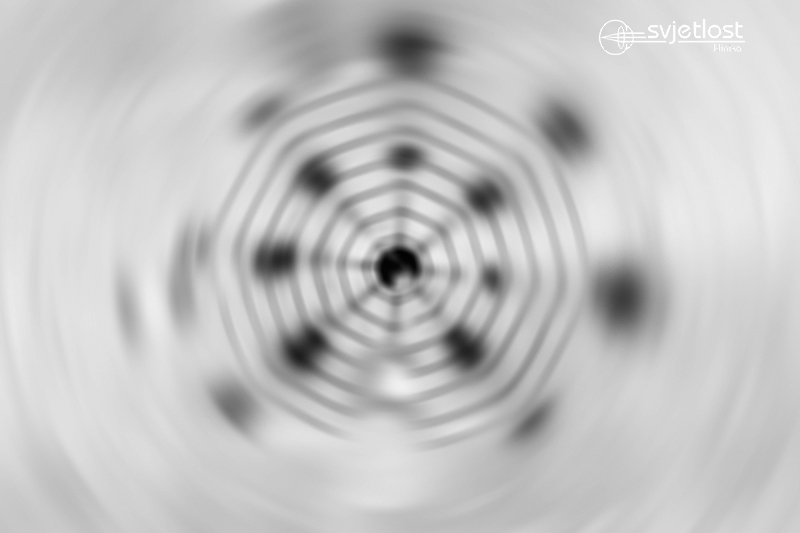The eye is also able to perceive its microenvironment: the blood vessels that feed it, the gel that fills the eyeball, even its own blood cells.
With sense of sight we receive approximately 90% of the information from the environment. But did you know that we can sometimes see the structures of our own eye? If the eye is healthy and well-sighted, it’s able to perceive its microenvironment: the blood vessels that feed it, the gel that fills the eyeball, even its own blood cells. You've probably seen parts of your own eye, but you did not know it...
Information about the size, shape, color, and position of objects that surround us are transmitted through the light up to the eyes. Under suitable conditions light falling on the eye may render visible certain objects within the eye itself. These perceptions, as defined by Helmholtz, are called entoptical.
Unlike the optical illusions (what we see doesn’t exist) here the images are true, but like the illusions, are only visible to us.
What are the most common phenomena?
Floaters or muscae volitantes - are slowly drifting blobs of varying size and shape, which are particularly noticeable when lying down looking at bright, featureless background, such as sky. The cause is the glass itself, i.e. the natural irregularities and blurs that exist in the gel that fills most of the eyeball.
Blue field entoptic phenomenon – are tiny bright dots moving rapidly along squiggly lines in the visual field. They are most noticeable when looking at the source of a monochromatic blue light. These are their own white blood cells moving in the capillaries in front of the retina. (a thin layer of tissue that receives light that the lens has focused, converts the light into neural signals, and sends these signals on to the brain for visual recognition)
Phosphene- an entoptic phenomenon that denotes everything eye sees when it is "not looking", i.e. when induced by mechanical, electrical, or magnetic stimulation. simplest example is what we see apply pressure on the closed eye - bright irregularly shaped circles floating in the darkness or many tiny dots of different colors, structure and duration.
The Purkinje tree - If you have ever been to ophthalmologic examination of the eye periphery, you can recall that you could see twigs and lines through the bright light. They are their own retinal blood vessels that can be seen by shining the beam of a small bright light through the pupil in dark room. Under normal circumstances, they are not seen due to brain adaptation to their fixed position.
Though the eyes are the Creator’s gift through which we’re constantly getting to know the world around us, eyes are an excellent tool to get to know ourselves.
Dr. Mirko Ratković, Ophthalmologist, Retinal Department
Information about the size, shape, color, and position of objects that surround us are transmitted through the light up to the eyes. Under suitable conditions light falling on the eye may render visible certain objects within the eye itself. These perceptions, as defined by Helmholtz, are called entoptical.
Unlike the optical illusions (what we see doesn’t exist) here the images are true, but like the illusions, are only visible to us.
What are the most common phenomena?
Floaters or muscae volitantes - are slowly drifting blobs of varying size and shape, which are particularly noticeable when lying down looking at bright, featureless background, such as sky. The cause is the glass itself, i.e. the natural irregularities and blurs that exist in the gel that fills most of the eyeball.
Blue field entoptic phenomenon – are tiny bright dots moving rapidly along squiggly lines in the visual field. They are most noticeable when looking at the source of a monochromatic blue light. These are their own white blood cells moving in the capillaries in front of the retina. (a thin layer of tissue that receives light that the lens has focused, converts the light into neural signals, and sends these signals on to the brain for visual recognition)
Phosphene- an entoptic phenomenon that denotes everything eye sees when it is "not looking", i.e. when induced by mechanical, electrical, or magnetic stimulation. simplest example is what we see apply pressure on the closed eye - bright irregularly shaped circles floating in the darkness or many tiny dots of different colors, structure and duration.
The Purkinje tree - If you have ever been to ophthalmologic examination of the eye periphery, you can recall that you could see twigs and lines through the bright light. They are their own retinal blood vessels that can be seen by shining the beam of a small bright light through the pupil in dark room. Under normal circumstances, they are not seen due to brain adaptation to their fixed position.
Though the eyes are the Creator’s gift through which we’re constantly getting to know the world around us, eyes are an excellent tool to get to know ourselves.
Dr. Mirko Ratković, Ophthalmologist, Retinal Department



